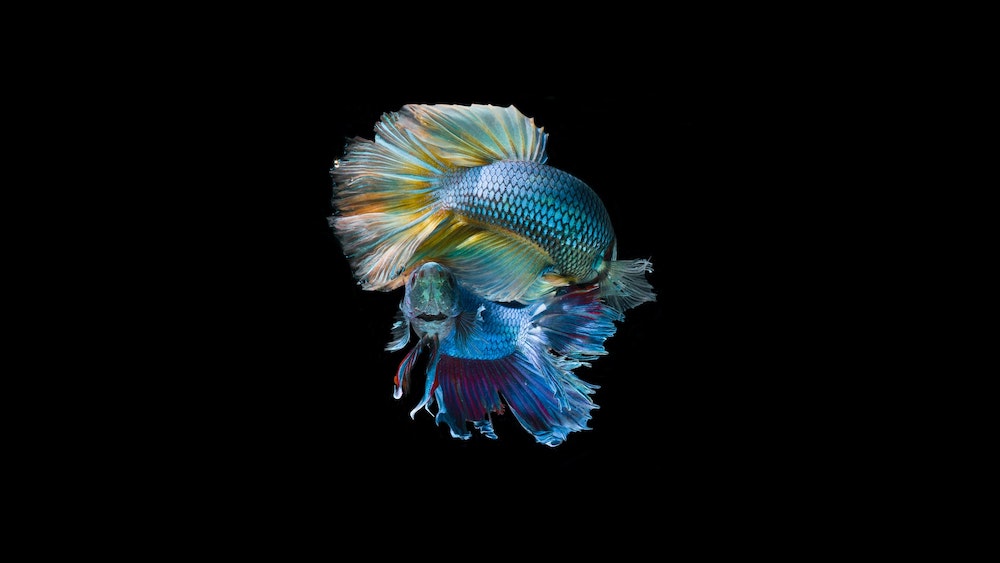Keeping pets, especially betta fish has its own benefits for the owner. Starting from reducing stress levels, giving an aesthetic touch to the dwelling, being able to eliminate mosquito larvae, as well as controlling blood pressure. But apparently, in addition to these benefits, you can also benefit if you cultivate betta fish, you know. Come on, see the information below.
Siamese Fighting Fish / Betta Fish
Betta fish is one type of ornamental fish that is very popular in Indonesia. The beautiful appearance of betta fish makes some people interested in keeping it. Betta fish have habitats in Southeast Asia such as Indonesia, Malaysia, Thailand, Brunei, Vietnam, and Singapore.
Betta fish are divided into 2 groups, namely ornamental betta and fighting betta. Betta is ornamentally seen from the beauty of shape, color, and movement. Meanwhile, fighting betta fish is seen in their aggressiveness in defending their territory.
Advantages of Betta Fish
Actually, what are the advantages of betta fish? This ornamental fish is known for the shape and size of its tail and fins which are pretty large. This tight and beautiful fin is what makes many people interested in keeping it. In addition, betta fish have a high survival ability where they are able to live in water with low oxygen levels. This is because in his body there is a labyrinthine cavity similar to the lungs in humans.
Another advantage of betta fish is that it is easy to maintain. Betta fish habitat is basically in the wild, namely swamps, rivers, lakes, and calm waters, and live in groups. Wild betta fish eat mosquito larvae or small worms. By being given mosquito larvae, betta fish are able to survive. In addition to mosquito larvae, betta can also be fed salmon, water fleas, brine shrimp, blood worms, fruit flies, egg yolks, and pellets.
From the advantages above, some people make betta fish as a side income by cultivating betta fish. Check out the information below for an explanation.
How to Cultivate Betta Fish
Here is how to do betta fish cultivation obtained from several sources.
-
Select Betta Fish Type
The first step is to choose the betta fish you want to cultivate by looking for quality seeds. Quality betta fish usually have no congenital defects and are not susceptible to disease. To distinguish between male and female betta fish, you can see from the movement, tail shape, color, and body shape. The female betta fish has a slower movement, a shorter tail shape, colors that are not as bright as the male, and a relatively small body shape. Before the spawning process, make sure the male and female sires are both mature or ready to mate.
-
Prepare the House
In the spawning process, be sure to prepare a betta fish house with a container or aquarium. The larger the container or housing provided, the smaller the risk of the aquarium getting dirty. A dirty aquarium will make betta fish easy to stress, get sick, and even experience premature death. Although the survival rate is high, providing a water filter is also recommended to filter out betta fish waste and food debris. If there is no filter, try to clean it regularly. Next, you can prepare additional equipment for betta fish cultivation such as a 25-watt heater to make the water temperature ideal, sponge filters, pumps, plants, and LED lamps.
-
Provide a Breeding Place
Don't forget to also provide a place for betta fish to breed. When mating, betta fish like to hide and like privacy. Be sure to provide a space away from distractions around the betta's breeding grounds. It is not recommended that you fill the water too deep to prevent your hickey from reaching the surface to breathe and eat. Before mating, put the female betta fish in one aquarium but are given a partition with the male first. This is useful for luring the male to make a bubble nest. After the male builds the bubble nest, unite the male and female betta fish and let them adapt to their environment and let them mate in the breeding grounds.
-
Monitor Betta Progress
After mating, the female will lay eggs and the male will take care of the eggs by making more bubbles and transferring the eggs the female produces to a new bubble nest. You can separate the female brood into another container to prevent the female from eating the fertilized eggs. You can monitor the development of the egg whether it can hatch or not (about 3-4 days). Once the betta eggs hatch, you can move them to a larger aquarium and feed them.
-
Betta Fish Care
In order for betta fish farming to produce quality chicks and generate profits, make sure you pay attention to its care by not providing sharp decorations that can damage the betta's fins, ensuring good water temperature and quality, diligently filtering dirt or using filters, and providing appropriate food. by measure.
That's a glimpse of information related to betta fish cultivation which can be a hobby and additional income. Betta fish can be sold at a price in the range of Rp. 15 thousand to Rp. 300 thousand. Pretty tempting isn't it? For those of you who want to farm betta fish, make sure to understand all the sequences so that the betta fish don't die easily and the chicks produced are of high quality.
Hope this article was useful! For those of you who need a business capital loan, click the following link.
